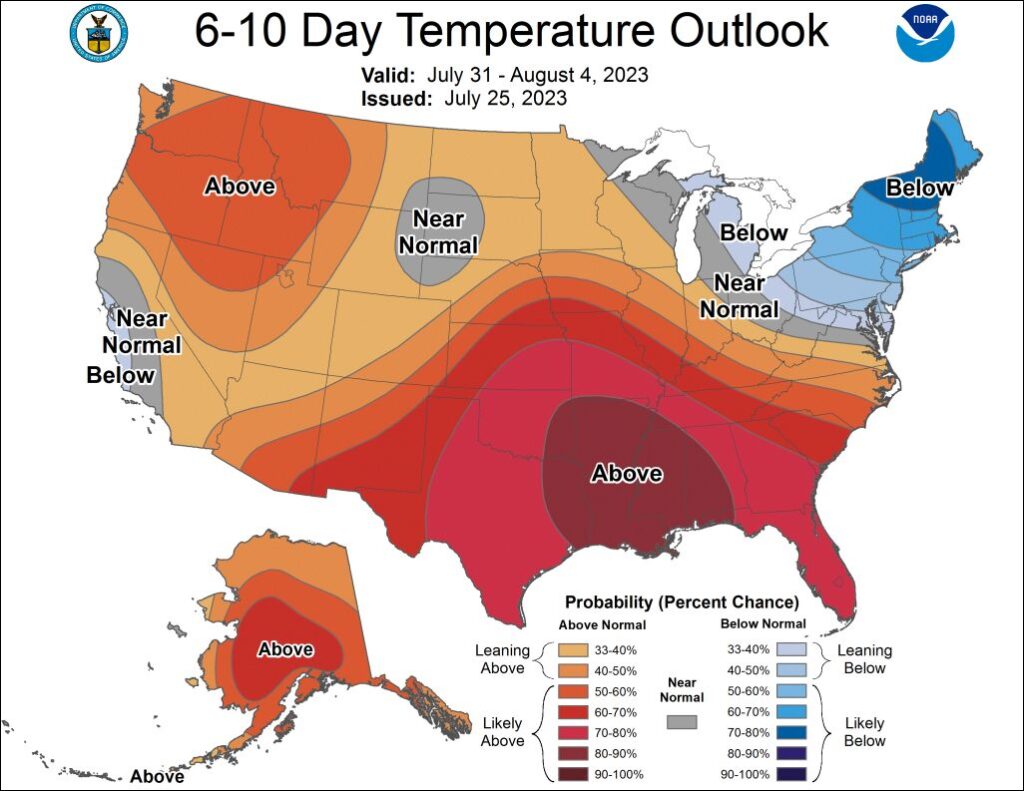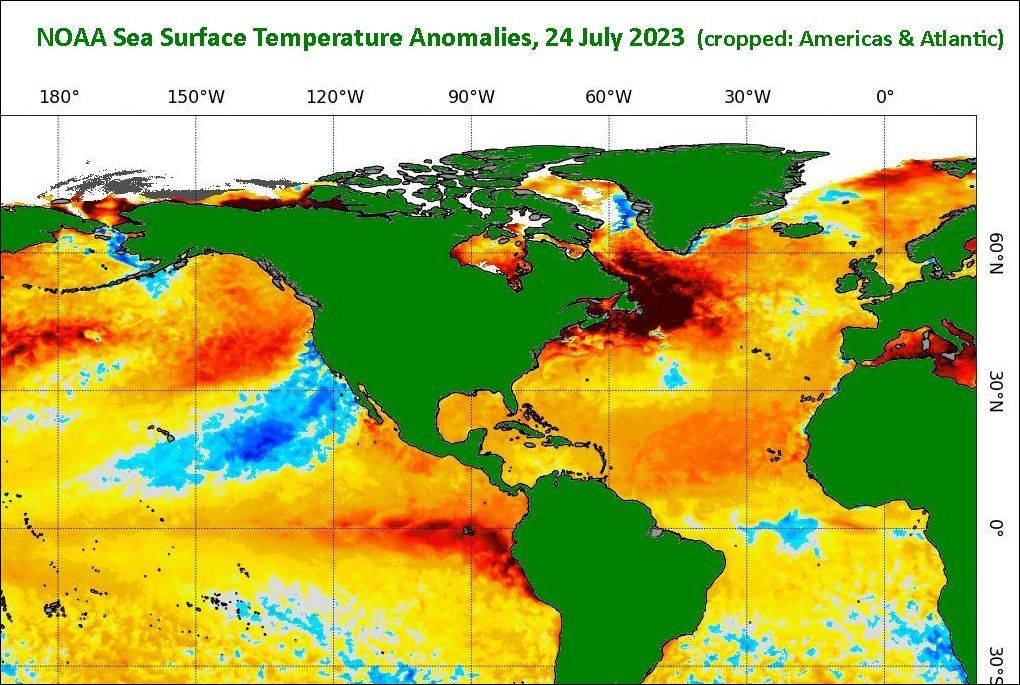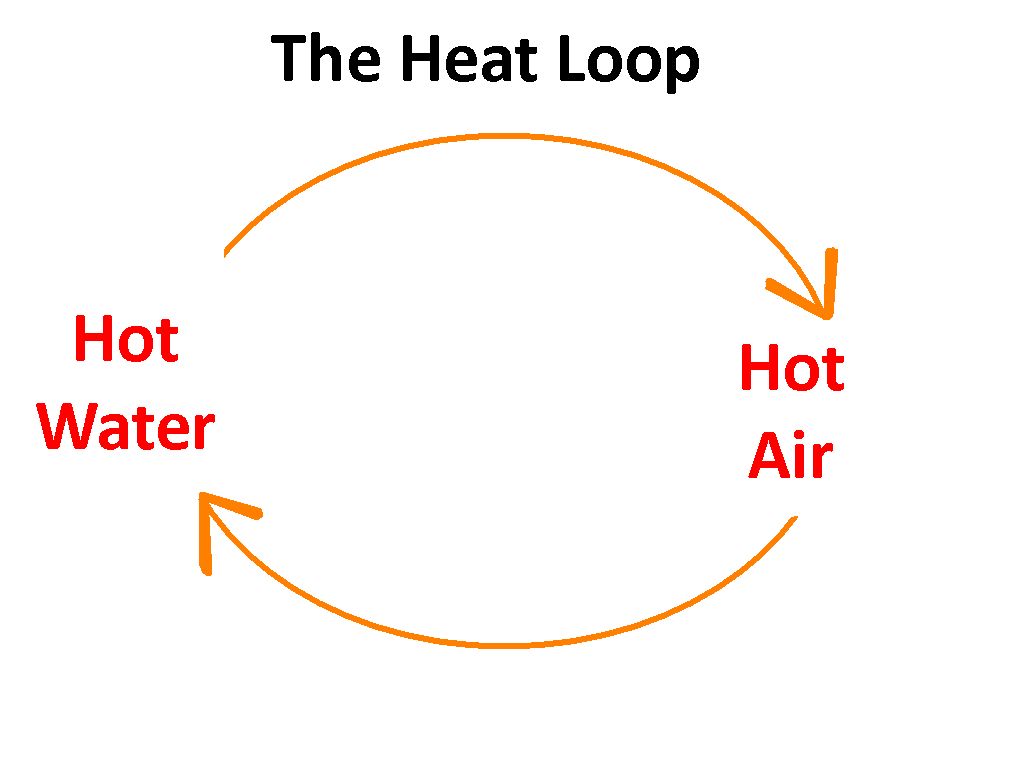
26 July 2023
The weather is hot and getting hotter. Excessive heat plagued the West, Texas and Florida and now, in the next 6-10 days, the heat will move southeast with soaring temperatures at 100°F+.

It’s not just the air that’s hot, the ocean is too. This timelapse video from Colin McCarthy @US_stormwatch shows ocean temperature anomalies from 22 February to 21 July. The hottest colors — the highest above normal — are off the Pacific coast of South America and in the North Atlantic near Newfoundland.
The North Atlantic is in uncharted territory.
— Colin McCarthy (@US_Stormwatch) July 22, 2023
The entire ocean basin is a record-smashing 1.5°C above normal, as millions of square miles of ocean experience strong to severe marine heatwaves.
Off the coast of Canada, ocean temperatures are up to 9°C (16°F) above average!… pic.twitter.com/AuPBCc82eX
Warming water off the coast of South America is the developing El Niño, part of the cyclical El Niño–Southern Oscillation (ENSO) that affects weather and climate around the world.
The real surprise is off the coast of Newfoundland where Colin McCarthy says “The North Atlantic is in uncharted territory. The entire ocean basin is a record-smashing 1.5°C (2.7°F) above normal.”
Both are easier to see in this static map from NOAA.

Hot water makes the air hot as Newfoundlanders can tell you. Summers are usually so cool there that only 1 in 5 households in St John’s, NL have air conditioning, at least as of 2019. That is probably changing this summer as temperatures soar into the 90s.
Hot water makes hotter air makes hotter water in an endless feedback loop.

With El Niño on top of climate change I don’t think it will end well.
p.s. Today’s news Florida ocean records ‘unprecedented’ temperatures similar to a hot tub!
(photo and map credits are in the caption; click the links to see the originals. The Heat Loop diagram is by Kate St. John)
IT IS CALLED SUMMER! IT HAS BEEN HAPPENING FOR CENTURIES.